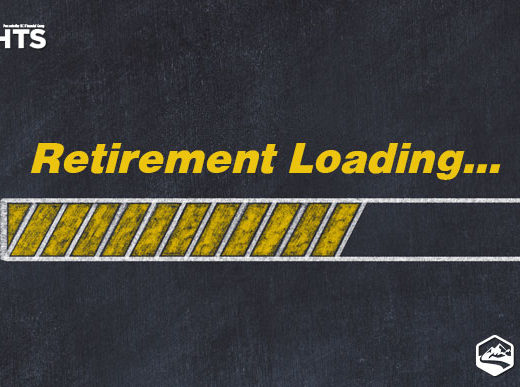Why striving to stay in the workforce a little longer may make financial sense.
The median retirement age for an American woman is 62. The Federal Reserve says so in its most recent Survey of Household Economics and Decisionmaking (2017). Sixty-two, of course, is the age when seniors first become eligible for Social Security retirement benefits. This factoid seems to convey a message: a fair amount of American women are retiring and claiming Social Security as soon as they can.1
What if more women worked into their mid-sixties? Could that benefit them, financially? While health issues and caregiving demands sometimes force women to retire early, it appears many women are willing to stay on the job longer. Fifty-three percent of the women surveyed in a new Transamerica Center for Retirement Studies poll on retirement said that they planned to work past age 65.2
Staying in the workforce longer may improve a woman’s retirement prospects. If that seems paradoxical, consider the following positives that could result from working past 65.
More years at work leaves fewer years of retirement to fund. Many women are worried about whether they have saved enough for the future. Two or three more years of income from work means two or three years of not having to draw down retirement savings.
Retirement accounts have additional time to grow and compound. Tax-deferred compounding is one of the greatest components of wealth building. The longer a tax-deferred retirement account has existed, the more compounding counts.
Suppose a woman directs $500 a month into such a tax-favored account for decades, with the investments returning 7% a year. For simplicity’s sake, we will say that she starts with an initial contribution of $1,000 at age 25. Thirty-seven years later, she is 62 years old, and that retirement account contains $974,278.3
If she lets it grow and compound for just one more year, she is looking at $1,048,445. Two more years? $1,127,837. If she retires at age 65 after 40 years of contributions and compounded annual growth, the account will contain $1,212,785. By waiting just three years longer, she leaves work with a retirement account that is 24.4% larger than it was when she was 62.3
A longer career also offers a chance to improve Social Security benefit calculations. Social Security figures retirement benefits according to a formula. The prime factor in that formula is a worker’s average indexed monthly earnings, or AIME. AIME is calculated based on that worker’s 35 highest-earning years. But what if a woman stays in the workforce for less than 35 years?4
Some women interrupt their careers to raise children or care for family members or relatives. This is certainly work, but it does not factor into the AIME calculation. If a woman’s work record shows fewer than 35 years of taxable income, years without taxable income are counted as zeros. So, if a woman has only earned taxable income in 29 years of her life, six zero-income years are included in the AIME calculation, thereby dragging down the AIME. By staying at the office longer, a woman can replace one or more of those zeros with one or more years of taxable income.4
In addition, waiting to claim Social Security benefits after age 62 also results in larger monthly Social Security payments. A woman’s monthly Social Security benefit will grow by approximately 8% for each year she delays filing for her own retirement benefits. This applies until age 70.4
Working longer might help a woman address major retirement concerns. It is an option worth considering, and its potential financial benefits are worth exploring.
View More Articles
Citations.
1 – dqydj.com/average-retirement-age-in-the-united-states/ [6/11/18]
2 – thestreet.com/retirement/18-facts-about-womens-retirement-14558073 [4/17/18]
3 – investor.gov/additional-resources/free-financial-planning-tools/compound-interest-calculator [6/14/18]
4 – fool.com/retirement/social-securitys-aime-what-is-it.aspx [6/9/18]
Investment advisory services are offered through Trek Financial, LLC., an SEC Registered Investment Adviser. Information presented is for educational purposes only. It should not be considered specific investment advice, does not take into consideration your specific situation, and does not intend to make an offer or solicitation for the sale or purchase of any securities or investment strategies. Investments involve risk and are not guaranteed. Be sure to consult with a qualified financial adviser and/or tax professional before implementing any strategy discussed herein. This material was prepared by MarketingPro, Inc., and does not necessarily represent the views of the presenting party, nor their affiliates. This information has been derived from sources believed to be accurate. Please note – investing involves risk, and past performance is no guarantee of future results. The publisher is not engaged in rendering legal, accounting or other professional services. If assistance is needed, the reader is advised to engage the services of a competent professional. This information should not be construed as investment, tax or legal advice and may not be relied on for the purpose of avoiding any Federal tax penalty. This is neither a solicitation nor recommendation to purchase or sell any investment or insurance product or service, and should not be relied upon as such. All indices are unmanaged and are not illustrative of any particular investment. Trek FG 18-104




